The best EV and car tech of CES 2024: from Honda, BMW, Mercedes and more
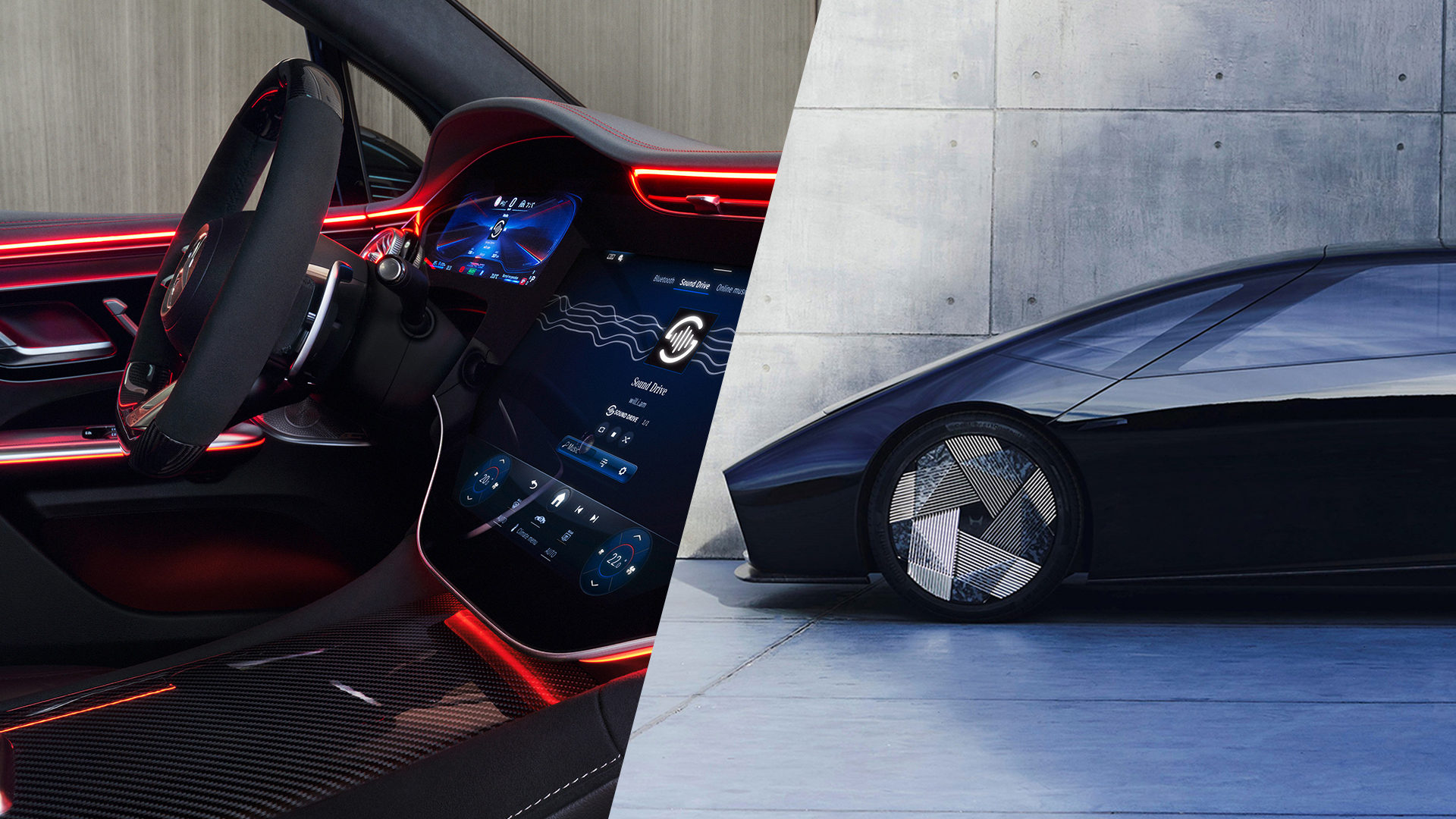
Cars are rapidly becoming an extension of our digital lives – and this week's CES 2024 showed how much the two will continue to intertwine this year and beyond.
Whether it's accessing your calendar on the move or controlling your smart home kit with your voice, cars are increasingly becoming giant smartphones. Add a push towards alternative fuel sources, be it electricity or hydrogen, into the mix, and you can see why the Consumer Electronics Show is becoming a favorite spot for automakers to reveal their latest innovations.
This year saw just a handful of new vehicle concepts unveiled, chiefly Honda’s re-writing of its own EV rulebook and Kia’s push into commercial vehicles. But AI assistants and advanced infotainment offerings were arguably the show’s core theme in 2024.
Luckily for you, we sweatily shuffled over 40km in three days to get hands-on with the most important EV and in-car tech reveals of CES 2024...
1. Honda resets the EV clock to zero
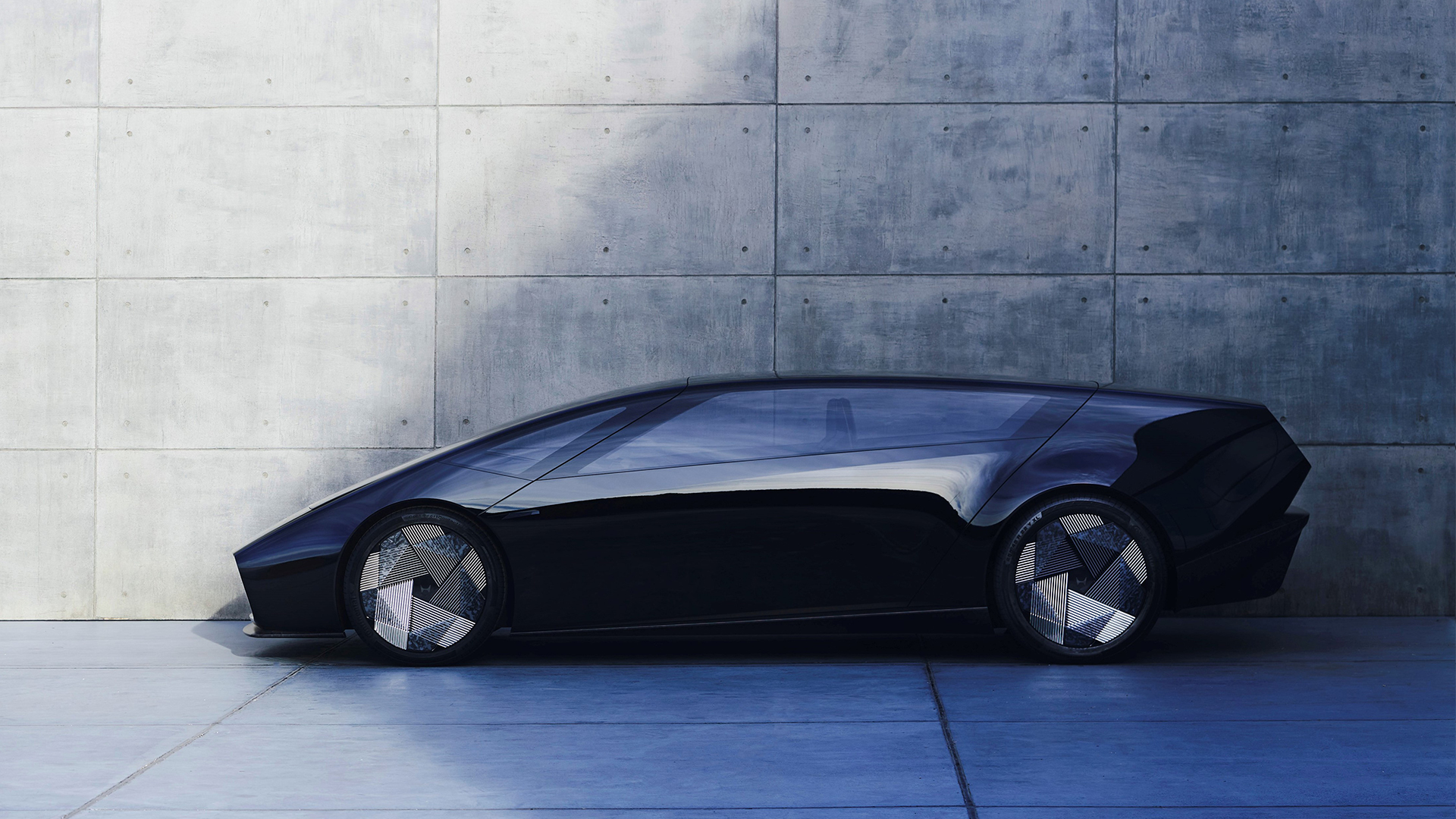
Honda's journey towards electrification hasn't exactly been smooth sailing. But at CES 2024, the Japanese company said it wants to remedy that by going back to "the starting point of Honda as an automaker". Essentially, it is ripping up its own rulebook and starting afresh.
The result is two stunning concepts, the 0 Series Saloon and Space-hub, both offering a glimpse at Honda’s overarching design direction and EV philosophy.
Global CEO Toshihiro Mibe says his company wants to move away from the "thick and heavy" electric cars of today and instead focus on a "thin, light and wise" philosophy.
Sign up for breaking news, reviews, opinion, top tech deals, and more.

Cut through the non-speak and Honda is looking towards the next generation of thinner and lighter battery packs to power its sleek, low and rakish Saloon, which is tipped to be very close to a production version and is promised to inherit the marque’s 'joy of driving' spirit.
There’s no word on range and performance, as it’s likely still hypothetical, but both the Saloon and the people moving, lounge-like Space-Hub will both feature advanced driver assist systems, high levels of autonomous driving capabilities and, fingers crossed, some cutting-edge infotainment thanks to Honda’s close ties with multimedia and entertainment giant Sony.
2. BMW showcases AR driving
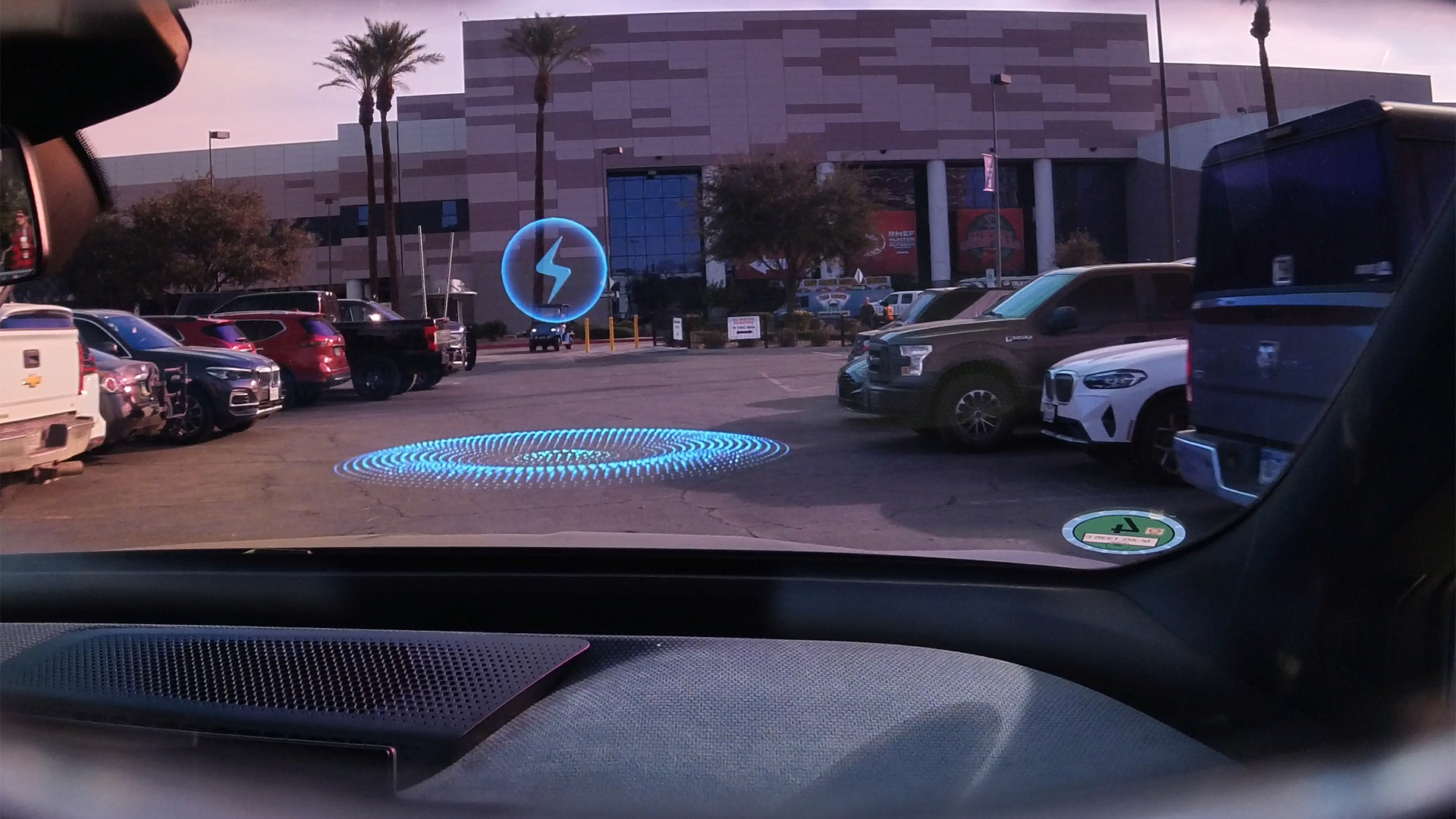
BMW hosted demos of an Xreal Air 2-based augmented reality experience aboard a BMW iX at CES 2024 – and TechRadar’s US Editor-in-Chief Lance Ulanoff said that what he saw "surprised and often delighted" him.
That’s high praise indeed, but rather than merely being a fun gimmick (BMW made it rain AR casino betting chips on our cruise around Las Vegas), it could also be a very handy extension of the navigation and infotainment system in general.
With the Xreal Air 2 glasses on, BMW is able to project driver information onto the real world outside the windscreen, with strobing 3D green arrows highlighting upcoming turns, and large red blocks warning when the driver is getting dangerously close to static objects.
Currently, the system is running through a smartphone that is connected to the car, but developers behind the tech want to make the entire experience wireless, opening it up to other brands of augmented reality glasses to make the experience as seamless as possible for potential customers.
But the ultimate party piece? Flip down the front sun visor and the system becomes an impressively sharp private cinema. Perfect for whiling away the hours when charging modern EVs on a cripplingly slow public charging network.
3. Kia pushes into electric vans

Kia's interpretation of PBV stands for ‘Platform Beyond Vehicles’, rather than the more commonly used 'purpose built vehicles', but either way this is its break into the electric commercial vehicle market.
The upcoming line-up comprises the PV1, PV5 and PV7, which showcase a range of sizes and applications, and span ideas that are very close to production, as well as those that are little more future-thinking.
The mid-sized PV5 is our best indication of what Kia’s electric van will look like and its highly modular interior can be configured for a range of scenarios, be it last mile delivery or transporting the family in a ride-hailing service.
One of its key USPs is its software defined nature, which allows it to pass data from a central control room to the vehicle and vice versa, making it simple for operators to manage an entire fleet in real time, without the need for additional technology.
As we look into the future-gazing crystal ball, we will see fully autonomous versions and what Kia is calling 'Easy Swap' technology, which allows a single vehicle chassis to house multiple upper bodies, effectively transforming it from a cargo carrier to mobile office (and beyond) in minutes thanks to hybrid electromagnetic and mechanical coupling tech.
4. Mercedes reinvents your driving playlist

It was the CES innovation I really wanted to hate, but ended up becoming slightly smitten with, as Mercedes-Benz effectively turned its electric vehicles into musical instruments.
Thanks to Will.i.am and his team of talented developers, the Mercedes-Benz MBUX Sound Drive app deconstructs your favourite tracks and uses information from the vehicle, such as steering inputs, acceleration and braking, to create intriguing, live performance style remixes.
You can read our full hands-on MBUX experience for more details, but a quick test of the technology proved it was less a gimmicky way to kill a few minutes, and more a clever way to uniquely soundtrack an audibly-bereft electric vehicle. Hey, I don’t even like The Black Eyed Peas, but MBUX Sound Drive made me reconsider my position.
5. Harman turns car seats into speakers
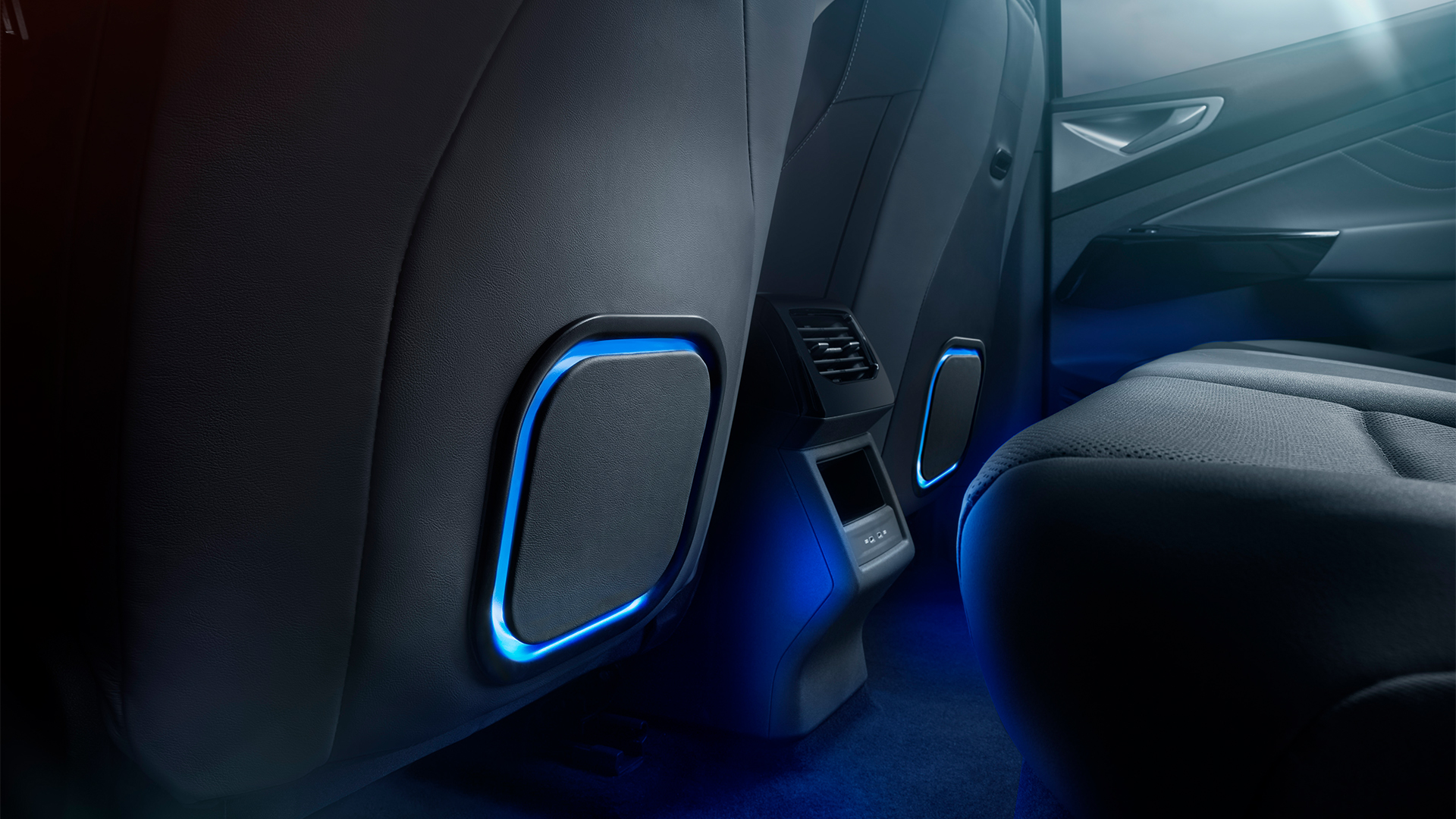
Dubbed SeatSonic, Harman’s passenger-centric audio system completely rethinks the in-car listening experience, with one Harman executive going so far as saying it also "frees car designers from today’s interior constraints".
We’re not sure how much design real estate is actually behind a door card, but the idea is solid, as it sees near-field transducers integrated into the headrests and a proprietary bass unit in the lumbar section of the seats for a viscerally bassy experience.
The sound quality is great, although the basic package, where speakers are only installed in the seats, can sound a little dull and distant. To combat this, Harman will offer additional tweeters that nestle beneath the windscreen for a much richer listen.

Better still, Harman says that because the audio doesn’t have to travel as far, there is a 60 per cent power saving when compared to a conventional in-car audio set-up. That stuff makes a big difference in today’s world of electric vehicles and range anxiety.
Harman has been working with seat makers, as well as Tier 1 suppliers that produce automotive grade ventilation, heating and massaging tech, to integrate it into one neat, ready to rock package. So expect to see it go live soon.
6. Mobion banishes awkward parking situations
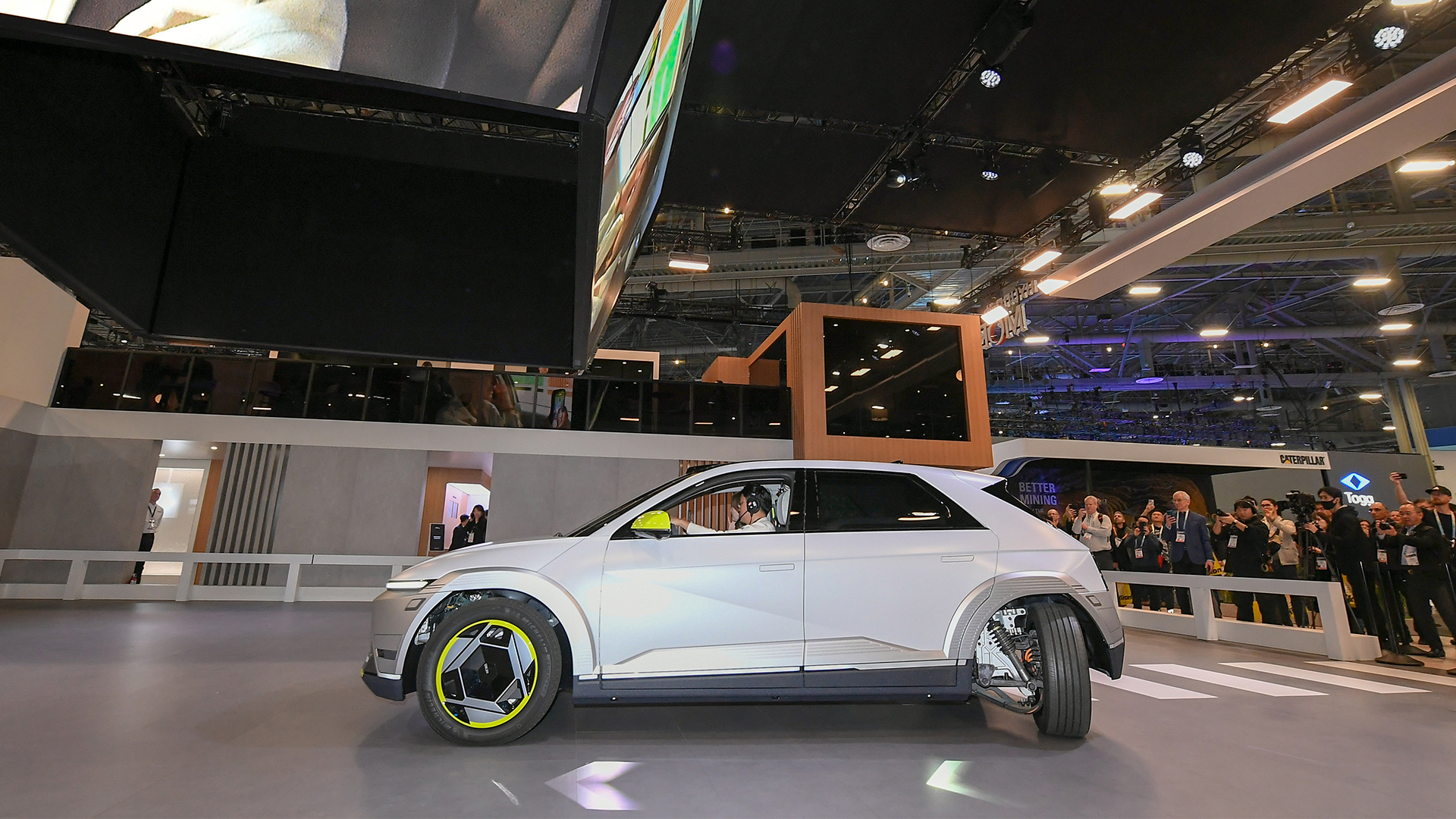
Stick with us here, as this one gets a little weird. But Hyundai Mobis, a subsidiary of automotive giant Hyundai, offered a glimpse of a future where tricky parking situations are no more. The Mobion concept car, which is just a jazzy Hyundai Ioniq 5, features the company’s In-Wheel motor technology and upcoming e-Corner drive system.
Here, all four wheels are driven and can steer independently of one another. Motors in the wheels mean no axles, which frees up each corner to do as it pleases. Well, within reason.
A live demonstration showed how Mobion can ‘crab-walk’, where all four wheels rotate 90-degrees and the car effectively performs a sideways scuttle into tough parallel parking spots. The system can move the car diagonally, back and forth, as well as see it rotate a full 360 degrees around its centre axis – it puts our U-turns to shame.
Naturally, everything is overseen by Lidar, radar and high-definition cameras, which allows most manoeuvers to be performed autonomously, while exterior projection lighting allows the car to project safety information around it as it performs its party tricks – seemingly so pedestrians don’t completely freak out.
The In-Wheel motor and e-Corner system are "ready for immediate mass production," according to Vice President Lee Seung-Hwan, the Head of Advanced Engineering at Hyundai Mobis. The company just needs to find a suitable Hyundai or Kia product to place it in.
7. Mullen goes supersonic with its 1,000bhp Five RS

Californian EV maker Mullen took the wraps off potentially one of the most aggressive and utterly banzai electric SUVs were have ever laid eyes on. The performance figures hurt just to look at: 1,000bhp, 0-60mph in under two seconds and a top speed in excess of 200mph.
All that, and Mullen says it will feature a two-speed transmission, an 800V electrical architecture for faster charging and offer over 300 miles of real-world range. Race-derived Brembo braking products, bucket seats, and an overtly aggressive stance all come as standard.
But because this is a modern EV, it also features an enormous dual screen infotainment set-up that is reported to come complete with a built-in voice assistant.
According to Car and Driver, the Five RS is slated to go on sale in Europe in 2025, with a US version following in 2027. Prices are due to start at an eye-watering $295,000 / £231,000 / €268,000 / AUS$441,000.
8. Hyundai takes to the skies

In a purpose-built 'vertiport' outside of the Las Vegas Convention Center sat Hyundai’s Supernal S-A2, the electric vertical take-off and landing (eVTOL) craft that is set to begin testing next year. Designed by Hyundai’s Luc Donckerwolke, the man behind the stunning N Vision 74 (and many others), it takes styling inspiration from the eyes of a bee and features a highly configurable, premium interior that can seat up to four passengers.
Using eight tilting rotors, it can fly at speeds of up to 120mph, while the on-board high density battery packs are good for trips ranging from 25 to 40 miles – although that will increase. The idea is that the craft operates at 1,500ft, way below commercial aircraft, and offers short hops between inner city ‘vertiports’ using an Uber-style ride hailing platform.
Head of the project and ex-NASA man Jaiwon Shin, says quietness is key, stating that the S-A2 emits just 65db during take-off and around 45db during cruise, which he says his less than a domestic dishwasher. He wants to avoid people "looking up" when it is in operation and hopes it will "blend into inner-city traffic noise".
The eVTOL craft has 'upgrade-ability' baked into it, meaning the S-A2 is ready to accept the next generation of battery technology. Supernal says it is moving beyond an early technology demonstrator and will begin testing the S-A2 you see before you in 2025.
9. XPeng reveals pre-order plan for its AeroHT Land Aircraft Carrier

If XPeng is the Chinese manufacturer of impressive and altogether highly competitive electric cars, XPeng AeroHT is its slightly bonkers, future-thinking little brother. A sibling that comes up with flying car concepts and six-wheeled off-road MPVs that come complete with a human piloted electric 'Air Module' in the back.
"I like flying, I have a helicopter, but I can’t take the helicopter where I want. If I have this car, I can drive to where I want, park up and go flying," XPeng AeroHT’s co-founder and vice president, Tan Wang told me at CES this year. "The car is for customers that like to go off-road, but the performance on the road is way better, because it has three motors, one on each axle" he added.
In addition to this, Wang claims the Air Module is much simpler to operate than a standard helicopter, as it blends human piloting skills with advanced levels of autonomy. Because of this, Wang feels it will require much fewer than 40 flying hours to obtain a helicopter license to legally be able to operate the eVTOL craft.
Wang also went on record to say the company was accepting pre-orders as of the end of this year, and that he hoped to have product in the air by the end of 2025. Both the six-wheeled vehicle and the aircraft can be yours for $200,000 /£157,000 /€182,000 / AUS$298,000, which feels like a bit of a bargain to us.
However, Wang also pointed out that his company was "still in the process" of obtaining certification from the Chinese Aviation Authority, but he was hopeful it would happen soon.
We’re covering all of the latest CES news from the show as it happens. Stick with us for the big stories on everything from 8K TVs and foldable displays to new phones, laptops, smart home gadgets, and the latest in AI.
And don’t forget to follow us on TikTok for the latest from the CES show floor!
You might also like

Leon has been navigating a world where automotive and tech collide for almost 20 years, reporting on everything from in-car entertainment to robotised manufacturing plants. Currently, EVs are the focus of his attentions, but give it a few years and it will be electric vertical take-off and landing craft. Outside of work hours, he can be found tinkering with distinctly analogue motorcycles, because electric motors are no replacement for an old Honda inline four.